 Weird Stuff
Weird Stuff  Weird Stuff
Weird Stuff  Mysteries
Mysteries 10 Tragic Disappearances and Deaths in Joshua Tree National Park
 History
History 10 Ways Childhood Really Sucked in the Old West
 Music
Music 10 Name Origins of Famous Bands from the 1990s
 Religion
Religion 10 Biggest Turnarounds by the Catholic Church
 Weird Stuff
Weird Stuff 10 Unbelievable Times Laws Had Unintended Consequences
 Humans
Humans Ten Historic Women Who Deserve Way More Credit Than They Got
 Movies and TV
Movies and TV 10 Films That Spawned Major Lawsuits
 History
History Ten Times Towns Were Wiped Off the Face of the Earth
 Creepy
Creepy 10 of the Most Disturbingly Haunted Public Houses in the UK
 Weird Stuff
Weird Stuff 10 Niche Subcultures That Are More Popular Than You Might Think
 Mysteries
Mysteries 10 Tragic Disappearances and Deaths in Joshua Tree National Park
 History
History 10 Ways Childhood Really Sucked in the Old West
Who's Behind Listverse?

Jamie Frater
Head Editor
Jamie founded Listverse due to an insatiable desire to share fascinating, obscure, and bizarre facts. He has been a guest speaker on numerous national radio and television stations and is a five time published author.
More About Us Music
Music 10 Name Origins of Famous Bands from the 1990s
 Religion
Religion 10 Biggest Turnarounds by the Catholic Church
 Weird Stuff
Weird Stuff 10 Unbelievable Times Laws Had Unintended Consequences
 Humans
Humans Ten Historic Women Who Deserve Way More Credit Than They Got
 Movies and TV
Movies and TV 10 Films That Spawned Major Lawsuits
 History
History Ten Times Towns Were Wiped Off the Face of the Earth
 Creepy
Creepy 10 of the Most Disturbingly Haunted Public Houses in the UK
10 Terrorist Organizations You Might Not Have Heard Of
Although it is the bete noire of our age, terrorism is the rule, not the exception. Insofar as history is concerned, low-level insurgency operations and guerrilla warfare are far more common than grand armies marching against one another. And whether or not these groups fight for territory, religion, or political ideals, their methods are almost always the same, with ambush attacks and assaults on so-called “soft targets” (see: civilians) being the most common.
Today, certain terrorist groups can cause fear by the very mention of their name. When we hear the words “ISIS” or “Al-Qaeda,” a collective chill runs down our spines. But what about, say, the Japanese Red Army or the KLA? Although these names do not typically evoke the same fear and loathing as Al-Shabab, this does not make them any less evil. The point of this list then is to bring past crimes against humanity back into the light so that they can never again be forgotten.
10Narodnaya Volya
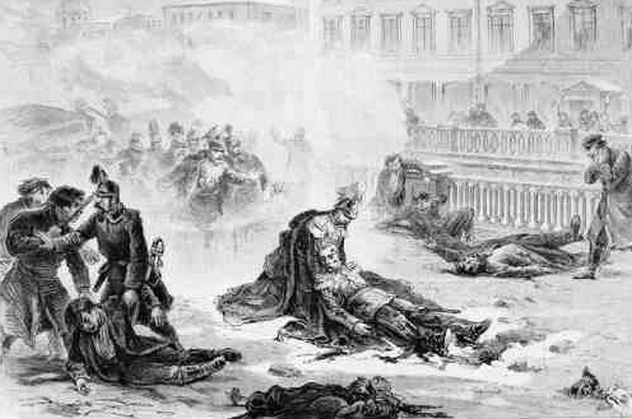
Meaning “The People’s Will” in Russian, the Narodnaya Volya organization was founded in 1878 as a left-wing underground movement dedicated to a radical overhaul of Russian society. Not only did Narodnaya Volya members want to dethrone the Tsar and establish a written constitution for the entire Russian Empire, but they also wanted to nationalize industries and establish socialist communes throughout the country in order to entrench the idea of self-rule among everyday Russians.
Not content to just write about or preach their ideology, Narodnaya Volya, which contained a core group known as the Executive Committee, was committed to performing acts of terrorism against Russian authorities in order to bring about the violent uprising that they saw as central to the eventual establishment of their utopian vision. The group’s most infamous deed came on March 13, 1881, when members of Narodnaya Volya assassinated Tsar Alexander II by using a bomb to blow up his carriage on the streets of St. Petersburg.
In the immediate aftermath, Russian authorities not only cracked down on the activities of the narodniki (which included Aleksandr Ulyanov, the older brother of Vladimir Lenin), but Alexander II’s successor, Alexander III, effectively turned back the liberal reforms of his father and further isolated Russia from the rest of Europe. However, in the long term, the ideals of Narodnaya Volya would inspire not only other left-wing groups in Russia, such as the Social Revolutionary Party, but the founding of the Soviet Union itself.
9Japanese Red Army

During the 1970s, the kaleidoscopic idealism of the revolutionary 1960s gave way to hard-bitten cynicism and a widespread feeling that nonviolent revolution, which had been such an integral part of the civil rights movement in America and elsewhere, was a dead end. So, instead of organizing mass protests, a certain segment of the counterculture began using bombs and bullets in order to achieve their desired aims. The Japanese Red Army, which was founded by an activist student named Fusako Shigenobu in Lebanon in 1971, was one such group.
From the outset, the JRA was intended to be a truly international outfit, and besides seeking to remove the Japanese royal family, the JRA was also intimately involved with the Popular Front for the Liberation of Palestine and other anti-Israel groups in the Middle East. As evidence of this collaboration, one of the JRA’s first acts was the Lod Airport Massacre in 1972, which saw members conduct a shooting spree that killed 26 American, Israeli, and Canadian citizens and wounded 79 others.
Other JRA attacks included the 1974 storming of the French Embassy in The Hague, which turned into a hostage situation that lasted some 101 hours, and the 1975 assault on several embassies in Kuala Lumpur, Malaysia. Then, after a lull that lasted almost a decade, the JRA began specifically targeting American military personnel in Europe, with the April 1988 bombing of a USO club in Naples being the most deadly.
8Red Brigades
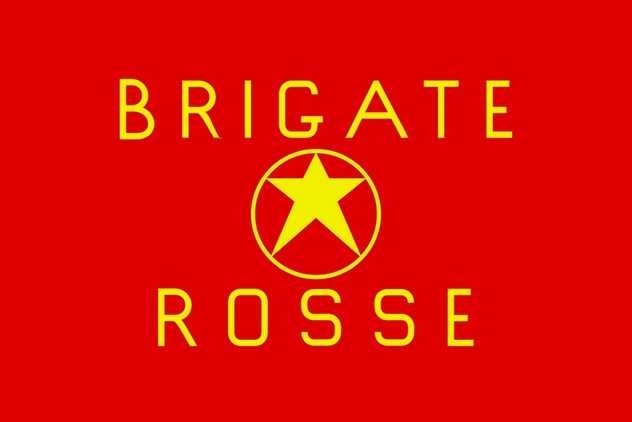
The era between the late 1960s and early 1980s is known as the “Years of Lead” in Italy. During that time, left-wing and right-wing groups literally battled for control of Italian politics, and as a result, mass casualty events became frequent. On the left, the preeminent group was the Red Brigades, a paramilitary-style terrorist organization that originally began as a Marxist and Maoist study group at the University of Trento. Before long, the founders of the Red Brigades moved to Milan and began firebombing buildings, committing acts of sabotage, and kidnapping people. In keeping with their core ideology, which promoted the idea of revolutionary armed struggle, the Red Brigades did not shy away from targeted assassinations or wanton murder.
The most notorious crime committed by the Red Brigades occurred in 1978, when members kidnapped and executed Aldo Moro, the Italian Prime Minster. A Christian Democrat, Moro was trying to reach a momentous compromise with the Italian Communist Party when his entourage was attacked on March 16. Five of Moro’s bodyguards were killed. Moro himself was killed almost two months later, after negotiations with the government failed. Attacks continued during the 1980s, such as the abduction of US Brigadier General James L. Dozier that lasted from 1981 to 1982. Amazingly, despite the crimes of the Red Brigades, French President Francois Mitterrand enacted the “Mitterrand doctrine” in the mid-1980s and effectively offered extradition-free asylum in France for those members of the Red Brigades who had left Italy for France in order to escape prosecution.
7Ordine Nuovo
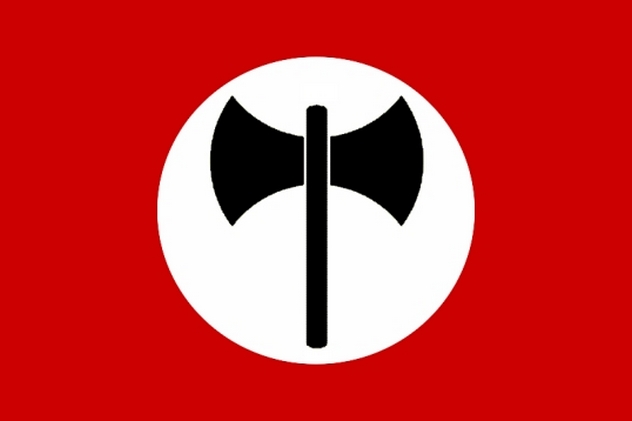
Meaning “New Order,” the Italian Ordine Nuovo movement began in the late 1950s as an extra-parliamentary group of the far right. In particular, the Ordine Nuovo espoused many of the same policies and ideals of the constitutionally banned National Fascist Party. As such, the Italian government forced the group to officially disband in the early 1970s. However, despite being forced to dissolve, the Ordine Nuovo continued to operate in the underground throughout the decade, while some of its members also worked alongside other far-right groups during the “Years of Lead.”
During this time, the Ordine Nuovo and their sympathizers carried out a string of bombings that served to further heighten socio-political tensions throughout Italy. First, on December 12, 1969, a bomb went off in Milan’s Piazza Fontana that killed 16 and wounded 88. Less than a year later, another explosion ripped through the Rome-Messina train, killing six and wounding over 100. Then, in 1974 alone, the group not only killed eight anti-fascist activists in Brescia with grenades but also helped to bomb the Ferrovie dello Stato train in Rome, an action which killed 12.
A common yet highly controversial claim supports the idea that the Ordine Nuovo and its many splinter groups—such as the Armed Revolutionary Nuclei, who bombed the Bologna train station in 1980—received funds from the CIA because Washington saw the group as a way to diminish the popularity of the Italian Communist Party and other left-wing groups in Europe.
6The Charles Martel Club
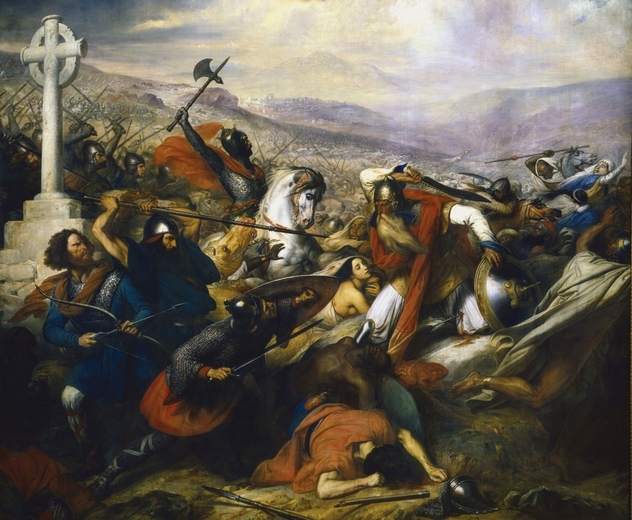
Tragically, terrorism has been a part of French life since at least the 18th century. In fact, the French Revolution, with its Reign of Terror, gave us the word “terrorism” in the first place. It should come as no surprise then that Paris was the epicenter of anarchist terrorism in the late 19th century. In our own time, we have witnessed multiple Islamist attacks in the capital city, with the most recent one being the January 2015 attack on the headquarters of the satirical newspaper Charlie Hebdo and the subsequent assault on a kosher supermarket in Porte de Vincennes.
A lot of today’s terrorism in France can be traced back to the bitter Algerian War, which was fought between 1954–1962. The war not only exposed France to religiously inspired and nationalist terrorism, but it also bred a new era of far-right resentment. A large segment of the French far right not only refused to forgive the French government for granting Algeria its independence, but they furthermore resolved to fight Algerian and North Africa immigration to France. The Charles Martel Club—named after the Frankish ruler who defeated an invading Muslim army at Tours in A.D. 732—were one such group.
Throughout the 1970s and 1980s, they targeted Algerian (and some Jewish) businesses and even the Algerian government with a string of kidnappings and bomb attacks. Admittedly, most of the actions attributed to the Charles Martel Club did not produce any fatalities, and therefore the group remains mostly a footnote in the history of terrorism. Still, the Charles Martel Club does have blood on its hands for the December 1973 bombing of the Algerian consulate in Marseille, which killed four and injured 20.
5Revolutionary Organization 17 November
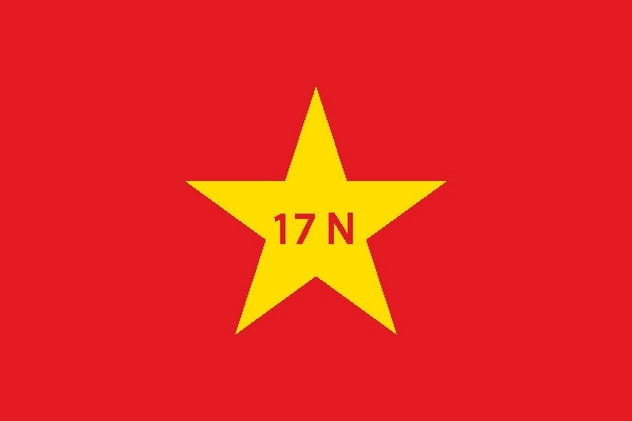
The Revolutionary Organization 17 November, better known as November 17 or 17N, formed as an urban guerrilla group in Greece in 1975. Dedicated to removing the US military from Greece and the Turkish military from Cyprus, November 17 promulgated a brand of radical Marxism that attempted to push Greece decidedly leftward after years of living under the right-wing military junta that came to power in 1967. A speciality of November 17 was the targeted assassination of high-ranking officials from the US. One instance of this is the 1975 murder of Richard Welch, the CIA’s station chief in Athens. After coming home from a Christmas party held at the home of the American Ambassador, Welch was shot by an unknown assailant. In 1983, US Navy Captain George Tsantes was also gunned down by the group along with his Greek driver.
While attacks on high-profile American targets made international news, November 17 also used bombs, guns, and even rockets to kill and maim members of the Greek government and security services. Even today, the group still manages to garner headlines with occasional acts of violence or threats of future violence. And since the fretful economic situation in Greece shows no signs of correcting itself, it’s a sure bet that November 17 will somehow make their presence felt.
4Abu Nidal Organization
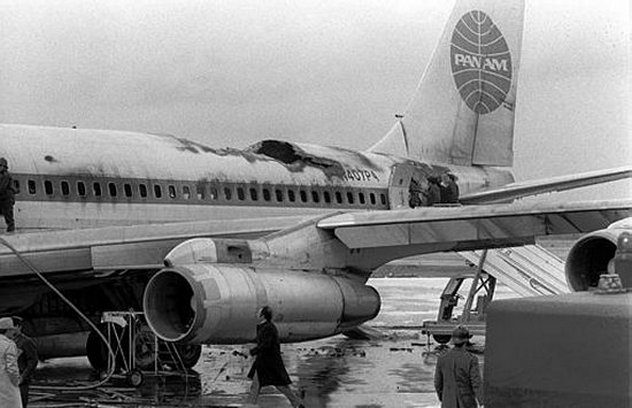
A large percentage of the terrorist groups of the 1960s and 1970s can be traced back to the Palestinian struggle against Israel. In the mountains of Lebanon, Jordan, and Syria, Palestinian insurgents trained and equipped various terrorist organizations, from the Quebec separatists in the FLQ to the Catholic militiamen of the Irish Republican Army. But despite a unified hatred of Israel, Palestinian revolutionaries often fractured among themselves between die-hard militants and those who saw politics as a way to achieve phased Palestinian statehood. The Abu Nidal Organization, as a member of the Rejectionist Front that refuted the Ten Point Program that was adopted by the PLO in the summer of 1974, were dedicated to waging a war against Israel and the West through armed struggle and only armed struggle.
Named after its longtime leader Sabri al-Banna, alias Abu Nidal (“Father of Struggle”), the Abu Nidal Organization was the most militant of all the Palestinian armed factions during its decades-long reign, and for a time, they were considered the most dangerous terrorist organization in the world.
The infamous crimes of the Abu Nidal Organization include the simultaneous assaults on airports in Rome and Vienna (which killed 17 and wounded well over 100 in December 1985), the September 1986 attack on the Neve Shalom Synagogue in Istanbul (which killed 22 people), and the hijacking of Pan Am Flight 73 in Karachi, Pakistan (which resulted in the deaths of 20 people). Thankfully, after years of infighting and battles with other Palestinian groups, the Abu Nidal Organization is no longer considered active, although it is rumored that some cells still exist in the Palestinian refugee camps that dot the Middle East.
3Azanian People’s Liberation Army
While, most of the time, the actions of terrorist groups are widely condemned, there are those instances when the terrorists themselves receive public sympathy because of their enemies. In other words, terrorists are sometimes considered to be the better alternative. During the rule of apartheid in South Africa, which legally upheld white supremacy, many black African groups resorted to violence in order to defeat a decidedly racist system that was reviled throughout the world. The Azanian People’s Liberation Army, which was the military arm of the Pan Africanist Congress, became one of the most notorious for its willingness to use shooting attacks and mobs armed with homemade weapons in order to advance their cause.
During its heyday, the APLA almost exclusively attacked white civilians, either through coordinated murder or mass casualty attacks. The racist attacks committed by the APLA include the 1992 attack on the King William’s Town golf club that killed four and the 1994 attack at the Heidelberg Tavern in Observatory, Cape Town, which killed five. However, the most well-known action of the APLA is the July 1993 St. James Church Massacre, which saw APLA members shoot blindly into a Sunday congregation until a white parishioner started firing back with a concealed handgun. After the much-publicized gang murder of American student Amy Biehl, which involved some members of the Pan Africanist Congress, the violent tactics of the APLA lost favor as Nelson Mandela and Truth and Reconciliation Commission tried to heal South Africa’s many lingering wounds.
2Kosovo Liberation Army

The Balkans in the 1990s was a hell of ethnic genocide. Even though Serbs, Croats, Bosniaks, and Albanians had lived peacefully side by side for generations, once the walls of the former Yugoslavia came down, the region descended into multiple wars of liberation that often pitted neighbors against each other. In Kosovo, which was then a historically important part of Serbia and a large part of Serbian identity thanks to the Battle of Kosovo in 1389, the ethnic Albanian majority sought to break away from Serbia in order to establish a separate state.
Spearheading this campaign was the Kosovo Liberation Army, or the KLA. After first attacking police stations and other organs of the Serbian government, the KLA, with the unintentional encouragement of the UN and NATO, began to carry out preemptive terror attacks that were more or less designed to drag the Serbs into another war. As predicted, in 1998, the Kosovo War erupted. Soon thereafter, NATO began a bombing campaign that effectively ended Serbian claims over Kosovo.
In the years following President Bill Clinton’s controversial decision to begin an aerial campaign against Serb forces in order to liberate Kosovo’s Albanians, many began to question NATO’s support of the KLA. In particular, it has come to light that besides deep ties with organized crime, the KLA were responsible for ethnic cleansing campaigns against Kosovo’s Serbs and Roma. Even more grotesque is the unsubstantiated yet popular belief that the KLA harvested the organs of Serbian Kosovars for international export.
1East Turkestan Islamic Movement
It may be hard to believe that a terrorist group with ties to both ISIS and Al-Qaeda could be considered “little-known,” and yet most in North America and Europe know little about the East Turkestan Islamic Movement (ETIM). Based in China’s far western province of Xinjiang, the predominately Uyghur group seeks not only the establishment of a separate East Turkestan but also the implementation of sharia law in the face of repressive state atheism. China has a long history of conflict with its Muslim populations, and its current policy of mass Han Chinese immigration and political supremacy in Xinjiang, coupled with the state-mandated atheism that is a primary feature of Communism, has only helped to further inflame the situation.
In recent years, there has been an uptick in ETIM attacks throughout China, including the March 2014 knife attack in Kunming that killed 31 people. Other attacks blamed on ETIM include a 2013 vehicular assault that killed five in Beijing’s Tiananmen Square and a series of bomb and knife attacks that left 12 dead and over 40 injured in 2011. Although ETIM has mostly focused its energies on attacking Chinese targets within China itself, members have attempted to carry out attacks on Chinese businesses abroad as well. Even more worrying for Beijing is the idea that a new generation of Uyghur fighters will soon return from the battlefields of Afghanistan, Pakistan, Iraq, and Syria with increased combat skills, better weapons and tactics, and new alliances.
Benjamin Welton is a freelance journalist based in New England. His work has appeared in The Atlantic, Crime Factory, The Airship Daily, The Classical, and others. He currently blogs at literarytrebuchet.blogspot.com.








